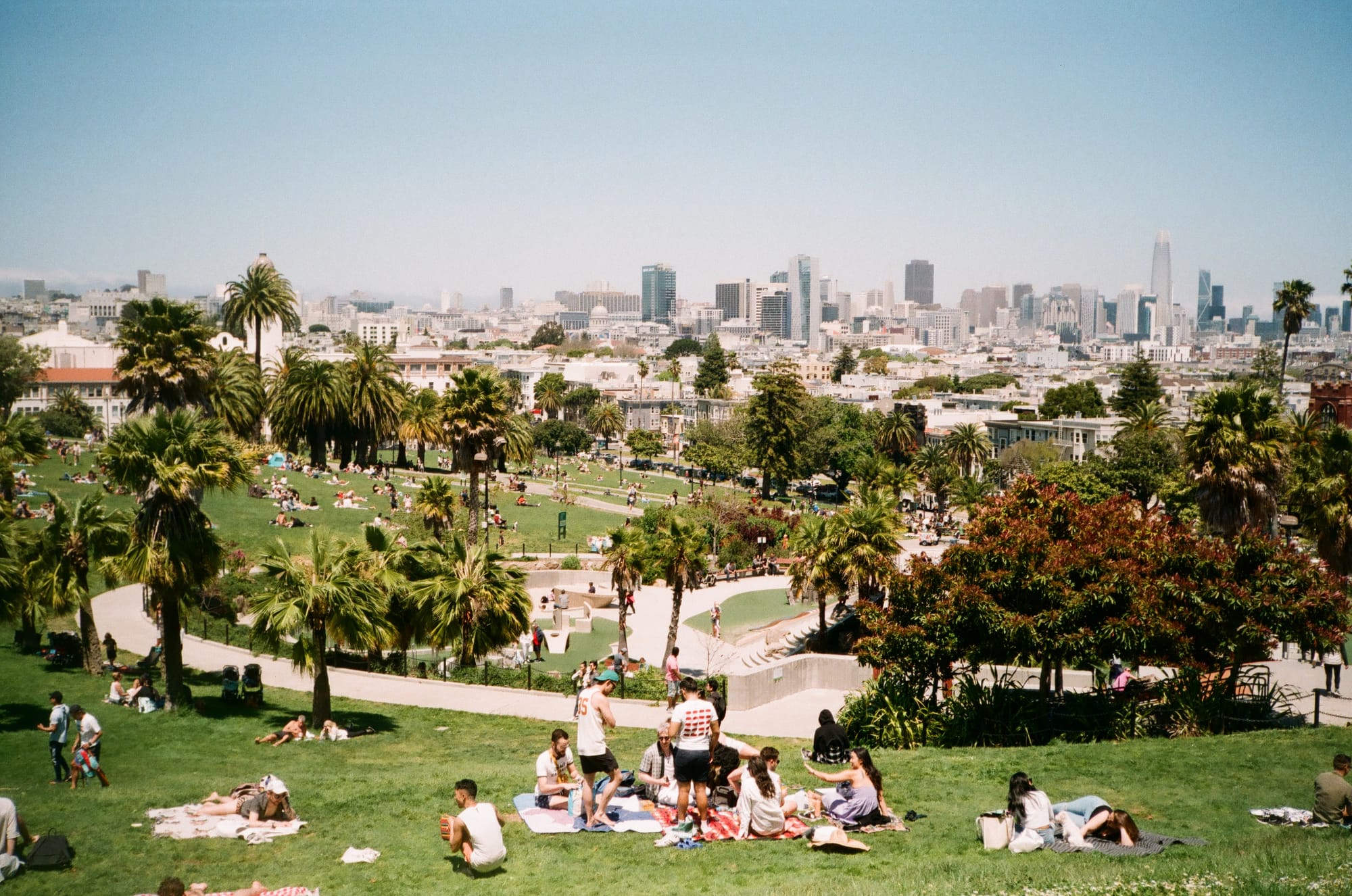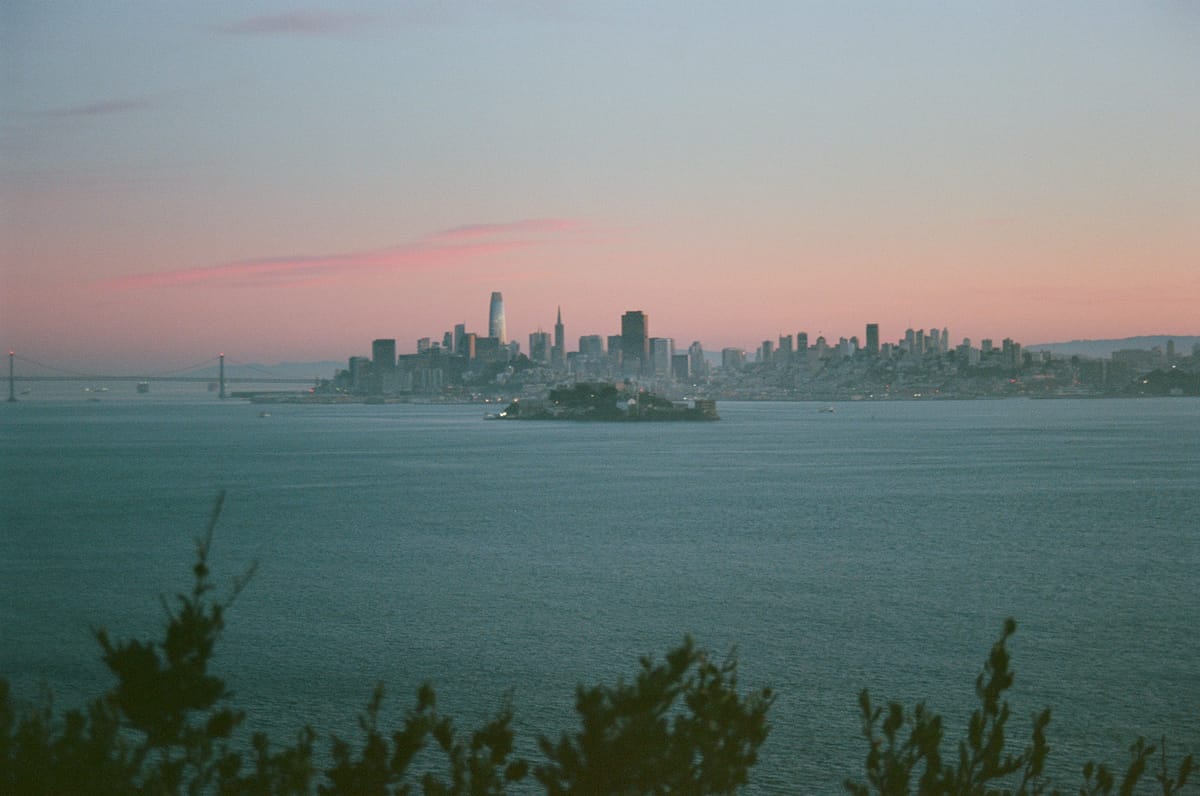At a recent house party, a girl too drunk to be there leaned into me and murmured the speculative net worths of the people in the room, gesturing softly with her finger: “A few thousand. Broke. Can’t be more than a hundred thousand. Millions, I think.”
At the same gathering, a man fact-checked something I said about local politics by taking out his phone and typing it into ChatGPT. He angled his phone towards me just before the little white ball spelled out: “Yes, it’s plausible.” I was right.
After hovering through a few conversations about the AI revolution, in which I was mostly outed as someone not working in AI or even in tech, I glanced at the bookshelves around me — a lot of Isaac Asimov and faddish tech-sponsored print magazines covering “the future of governance and society”.
I’d had enough. My friend said a driverless Waymo could arrive in three minutes, and we took it. On our way home, we passed a bus stop advertisement that curtly read: “Stop Hiring Humans.”
San Francisco looms large over the American imagination. Even I succumb to its mysterious promise from time to time, but seldom for very long.
The city is the indisputable tech capital of the country, but the majority of its workers do not work in tech. It’s difficult to estimate the true percentage of San Franciscans employed in the industry, but in 2021, one survey concluded that tech comprised 18.7% of all jobs.
It’s quite a loud fifth of the population, judging by the conversations I overhear in cafés (almost entirely about stand-ups, funding rounds, and coding exams); or the number of times I’ve waited for a trolleybus to arrive, only to discover a blacked-out private bus for tech employees using the same stop. Today, college students drop out to inhabit vacant apartments in “Cerebral Valley”, friends relocate via gig economy apps, and billboards broadcast a tech-infused language unintelligible to most of the city’s residents.
Yet I’m left wondering if ordinary San Franciscans will benefit from the boom, or if the city's newfound wealth will remain concentrated among an increasingly tiny class of digital oligarchs and venture capitalists. At parties fuelled by high-end champagne, White Claw and McNuggets, any number of evangelists will offer prophecies of prosperity. But are we heading for fully-automated luxury communism or the Depression-era Hooverville version? No one here can really tell me, but still they sprint full-speed ahead.
At another recent party, I noticed both Richard Rothstein’s The Colour of the Law and Peter Thiel’s Zero to One pressed against each other on a bookshelf. The host, who I gathered had created an app or a website more than a decade ago and long since cashed out, seemed eager to extend his technical expertise to larger societal problems. For many well-heeled people in tech, it’s an increasingly popular transition.
Across America, the tech and AI oligarchy has never held more political sway. Its influence is clear in both national and local administrations — from prominent national figures like Elon Musk and Thiel-backed Vice President JD Vance, to local leaders in San Francisco like Mayor Lurie and Supervisor Bilal Mahmood, who were both elected with significant support from tech-backed groups. Now liberated from regulatory concern, the industry is free to advance on a path paved with gold.
As it so happens, that golden path often veers rightward. San Francisco’s legacy of hippie counterculture and radical leftist idealism, long reduced to a nostalgic shadow, is more distant than ever. So too are the mythical days of “woke retreats” at Google, where you could unpack ableism while collecting a six-figure salary.
Instead, local money is now lavished on centrist and right-wing pressure groups — such as GrowSF, Abundant SF, Together SF, and Neighbors for a Better San Francisco — which have in the past four years fundraised over $50 million from conservative tech and real-estate elites. In the industry’s social scene, tech founder Eoghan McCabe's “San Francisco Freedom Club” recently host a party for more than 600 individuals passionate about “freedom, America, technology, capitalism, humanity, merit, and growth”. There, people could discuss the city’s new crop of hyper-local, techno-optimist magazines covering the “long bitcoin future” and the construction of a “Freedom City” in the Presidio national park.
Tides are turning here both locally and nationally. The city is more than just a testing ground for autonomous vehicles.
For all this technological determinism, there are still pleasant aspects of ordinary life in San Francisco. On those afternoons so thick with warmth and sun that the restaurants overflow onto Valencia Street, it’s hard not to pause and glance down the busy block. To the south, the round arc of Bernal Hill emerges above the avenue; to the north lurk a few downtown skyscrapers. In between, meanwhile, are countless pastel Edwardians, dusty used-book stores, exactly two coffee shops where the baristas know your name, and a dive bar frozen in the 1970s, where you’ve yet to lose a game of pool against a stranger.

You might expect a tech dystopia to be a harsh environment of glass and concrete, but the forgotten majority of the city is a resplendent paradise of urban landscaping. When you meet friends in the park later that afternoon, to eat bánh mì and drink Mexican beer, the perennially green pastures feel eternal and undisturbed by the economic forces that surround them.
Ironically, the parks here are covered in eucalyptus trees. Not only are they not native to the area — their shallow roots make them a terrible choice in a city known for its earthquakes.
To read the rest of this article, become a member for free.
